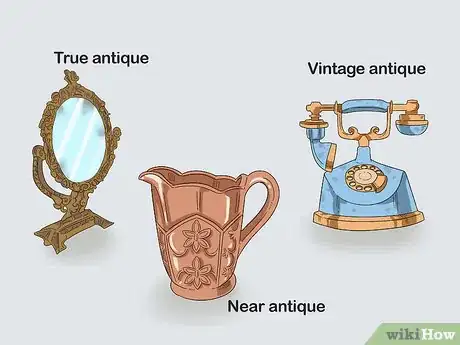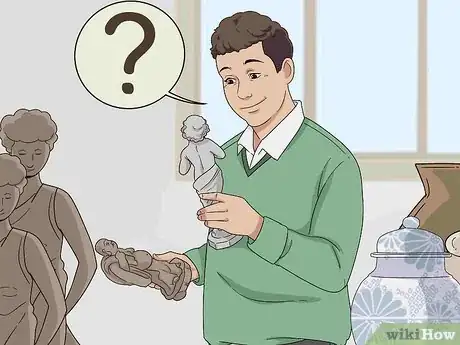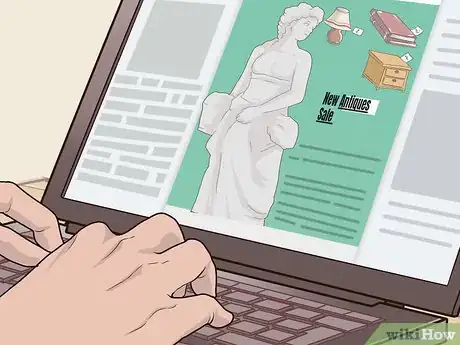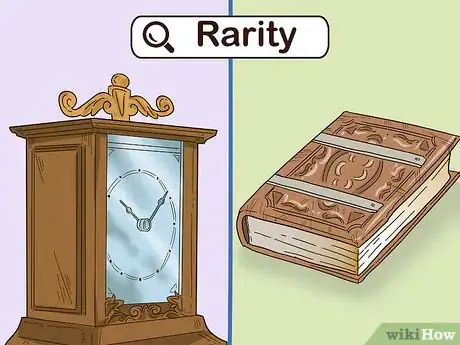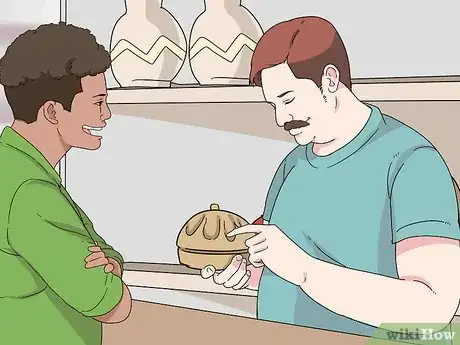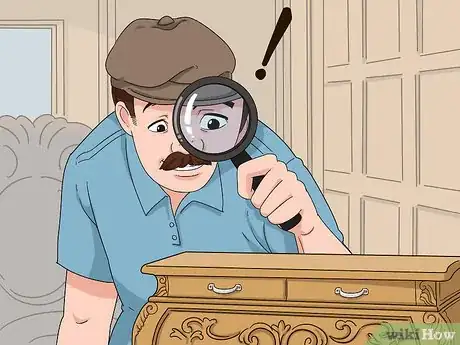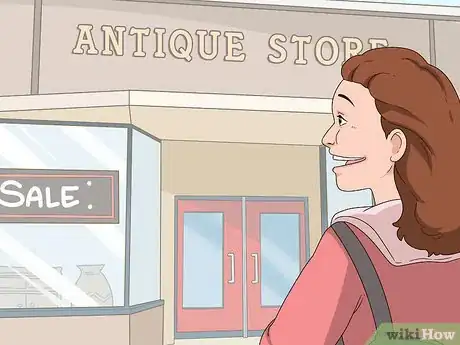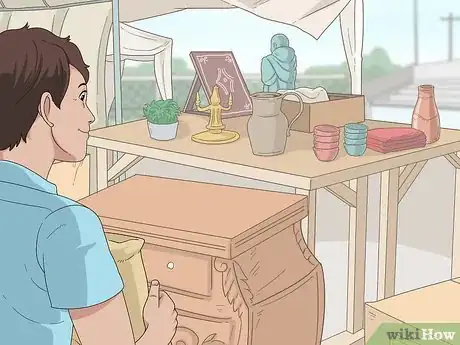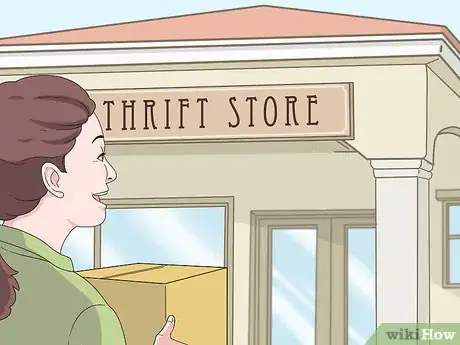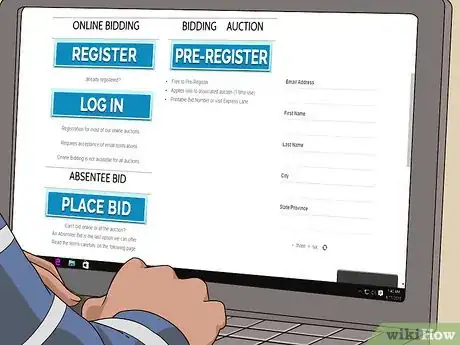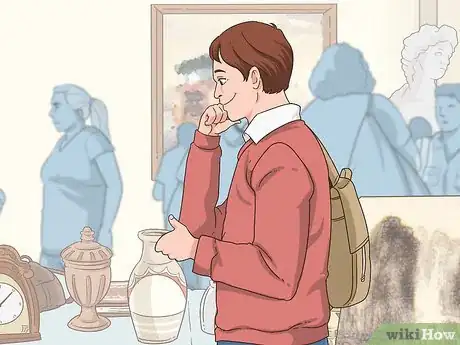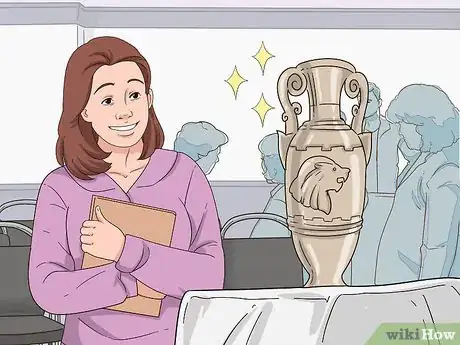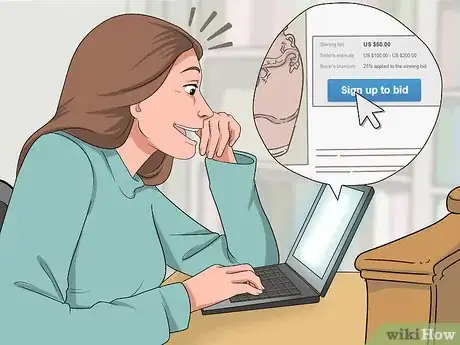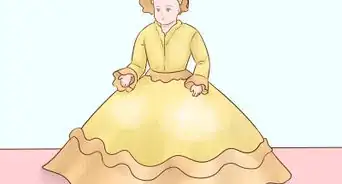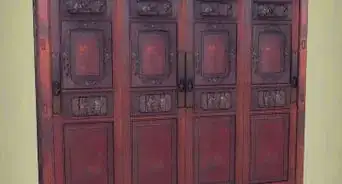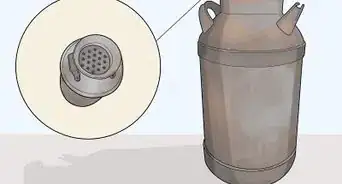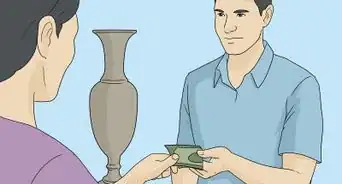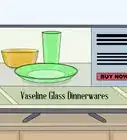This article was co-authored by wikiHow Staff. Our trained team of editors and researchers validate articles for accuracy and comprehensiveness. wikiHow's Content Management Team carefully monitors the work from our editorial staff to ensure that each article is backed by trusted research and meets our high quality standards.
There are 16 references cited in this article, which can be found at the bottom of the page.
This article has been viewed 40,905 times.
Learn more...
Whether you're starting a new collection or looking to sell vintage items, the world of antique buying can be overwhelming to a beginner. Once you get the hang of antique stores, auction houses, and online opportunities, you'll be able to shop with ease. Knowing how to shop for antiques and make informed choices will save you time, money, and energy in the long run. Soon enough, you'll be able to feel the thrill of finding high-value items in unexpected places.
Steps
Starting Your Search
-
1Know your terms. Learn the difference between a true antique, near antique, vintage, and collectable before you start searching for antiques.
- True antique is a collectable at least a century old, according to the majority of antique dealers.[1] This is based on tradition and the customs laws of various countries, though some societies define it as anytime before 1930. True antiques are considered desirable because of their age, beauty, rarity, condition, or personal connection.
- Near antique is an item between 75 to 99 years old.
- Vintage is a broad definition that means 'of a certain time'. It is the description used for a range of collectibles, and especially those from the 40s, 50s and 60s.
- Collectables are any items valued or sought at by collectors. These can be from any era and vary in price depending on rarity and condition.
-
2Consider special interests if you're pursuing a hobby. The best antique buys are ones that match your personal interests. Suppose you're an art lover, for example. What would you like to obtain? A certain kind of object, such as antique sculptures? A piece from a certain artist? Artwork from a certain period (ie: post-impressionism)? Think about your personal interests and use that to narrow your search.
- Read guides about your special interests to determine what exactly you want to collect. Within a certain era or type of item, there are many different brands or styles to consider. The value of your item will vary greatly depending on age, brand, and condition. Keep these three criteria in mind as you research.
- If you're collecting as a hobby, buy what you love, not what is most valuable. You'll want to collect what you enjoy, not what costs most.
Advertisement -
3Research valuable items if you're buying to resell. If you want to make money buying and selling antiques, research valuable antique items within a certain era or subset. You will work much more efficiently if you can narrow your focus. Choose a focus with high value among antique hobbyists and current trending interest.
- Whether you collect or sell, have your items appraised. This is to make sure your insurance covers the value of all your antiques in the event of theft, damage or loss. Appraisal will also give you a good idea of what your items are worth.
-
4Set your budget. Before you begin shopping, decide beforehand how much you want to spend on antiques. Even the most seasoned antique buyers can get carried away and buy more than they can afford. Keep a close eye on your funds and promise yourself not to exceed them, even if you want to later.
- If you are selling your items, think about how quickly you will be able to sell the item and for how much (in as accurate an estimate as you can). When you find a valuable item that you think will sell quickly, you may justify going over your budget a little. Use your best judgment, and don't buy anything that will put you in serious debt.
- Learn from your mistakes. If you overpay on an item or bought something worth less than you thought, that's just part of antique collecting. Like other hobbies, you'll get better as you go along.
Spotting Valuable Antiques
-
1Know the difference between mint, excellent, and good condition. If a vendor uses these terms online, at a store, or during an auction, you'll have a good idea of what quality to expect.
- Mint condition means that the piece is not cracked, chipped, or broken. This antique is in perfect condition.
- Excellent condition means that the piece has some minor flaws. The antique may have small chips or has been repaired over time.
- Good condition means that the piece is in a presentable state.[2] Antiques in good condition may have noticeable cracks or chips, and they might require repair after you buy it.
-
2Research the item's rarity. The less common an antique is, the more likely it has a high value. Rare items may have been made in limited amounts, or the amount of the items may have decreased over time. Items that are difficult to reproduce in the contemporary era (such as items made of limited materials) are especially coveted among collectors.[3]
- Rarity could also be determined by a manufacturing abnormality (like an unusual glass color for a certain era)[4] or, in the case of art, an uncommon subject matter for a certain artist.
- Rarity raises the value of a piece alongside desirability. Some antiques, such as a certain edition of a book, were initially commonplace. Decades or even centuries later, their desirability increases because of their historical significance or scarcity over time.
-
3Look for signs of authenticity. When looking at an antique, you may not know how to tell if this is an authentic piece. Research the antique and check for signs of its authenticity. Be on particular lookout for artist signatures, materials used, and era markers.
- Even if an antique looks old, it might not be from that era. Really convincing hoaxes use old materials to create their pieces. When in doubt, enlist the help of an antique broker or specialist.[5]
- If your piece has bronze mounts, unscrew one. On antique bronzed pieces, there will be two colors on the back: the dark, oxidized center and the tiny rim of gilding in the front. If your bronze mounts have a gilded back, your piece may be authentic.
-
4Check for damage. Even small chips can lower your antique's worth from mint to excellent (or excellent to good). Examine the item thoroughly and look for any cracks, chipped paint, or other signs of wear. Research what mint condition looks like for your antique and compare to spot any small damages.
- If you collect furniture or other wood items, look out for wormwood damage.[6] These will look like little holes in the wood. The older the wood, the more holes you'll see. Wormwood damage is not necessarily negative: it can be a sign that the object is as old as the vendor claims.
-
5Have your item appraised. After you have bought an item, bring it to an antiques collector who can tell you how much it's worth. Before the appraisal, prepare a mental inventory of where you found the item, how much you paid for it, and any other information you know about the item.[7] This will help the appraiser assess its worth accurately.
- Some auction houses have "appraisal days" where they invite people to bring their antiques and have them appraised for free or a reduced cost. Check local auction house websites and mark appraisal day dates down in your calendar.
Knowing Where to Look
-
1Shop at local antique stores. Antique shops are great places to find cheap deals on rare items.[8] In local shops, especially little-known ones, the condition may not be as great as you'll find at auctions. You never know, though: you may just find a high value item for a low price.
- Research before you buy. If you're not sure how much an item is worth or if it is authentic, read up on the item and return later. Some antique shops will let you put an item "on hold" while you decide.
- When on vacation or out-of-town, check out antique shops in the area. Especially make time for antique shopping when in big cities, as you are more likely to find special items.
-
2Visit flea markets. Flea markets are great places to buy antique furniture, trinkets, and jewelry for a low price. Search online for local flea market listings and think beforehand what items you want to look for. When you arrive, move from booth to booth and take notes of items you like.[9] When you have visited every booth, return to items of interest and negotiate a price with the vendor.
- Arrive early to make sure you're getting a wide selection to choose from.
- Bring cash. Most flea market vendors will not accept cards or checks.
- Talk to vendors, and ask if they have additional information about their wares. If you have more questions, perform an online search on your phone to research the item's authenticity and its value.
-
3Search the Internet. Famous auction houses like Sotheby's and Christie's can be visited online, and you can browse items for sale on their websites. Check the local classifieds for people selling collectables.
- eBay can be a hot spot for antiques, near antiques, and vintages (especially because you can narrow your search easily). When you find something that interests you, read the entire listing and check out the seller to make sure they're trustworthy. Ask for photos if none are on the listing. You can then either bid on the item or choose the "Buy It Now" option, usually for a higher price.[10]
- Connect with other antique buyers via online forums. There you can discuss the latest trends in antique buying/selling and receive advice from more seasoned hobbyists.
- Don't believe everything you see on the internet. Double check any information you read, and consider the information you find an open dialogue rather than a finished resource.
-
4Browse at garage sales. Remember the saying, "One man's trash, is another man's treasure?" You never know what hidden valuables you may find at a garage sale, and you'll be able to purchase them at a bargain. Check online listings beforehand or go looking for yard sale signs in the morning and check out what others have to offer.
- Ask questions. If you find something you believe is an antique, ask the seller what they know about this item. Is it a family heirloom, or did they buy it? Where did they buy it from? What other information can they tell you about the object?
- Pay special attention to estate sale listings. Estate sales can be a treasure trove of antiques.[11] Relatives of the deceased may have information about the items and their origin, or if the estate owner was an antique collector.
-
5Check out local thrift stores. Sometimes people donate old items believing that they're worthless when they are, in fact, rare antiques. Thrift stores are another place where you can find antiques for a fraction of their worth.
- Most thrift stores add new inventory every week. Ask an employee what day they bring in new inventory and choose that day each week to look for antiques.
-
6Buy from an antique dealer. If you want to find high quality items, buy from an antique broker in your special interest. An antique broker can guarantee the item's authenticity and offer you a fair price based on their assessment.[12] Antique dealers are more likely to be knowledgeable about their wares and answer any questions you may have.
- Let the antique dealer know what your budget is and how experienced you are. They can then make recommendations based on your price range and interest level.
- Make sure your antique broker is reputable and has an established presence in your special interest's culture. If you have doubts, check online reviews.
- Don't be afraid to haggle. Many antique dealers are flexible in their prices and can be negotiated with. If you have limited funds, let them know, and they may work out a deal with you.
Bidding at Auctions
-
1Research auctions you want to attend. Sotheby's, Christie's and other auction houses have offices all around the world.[13] You will be able to see the pieces more closely before they are auctioned, and make a better decision whether or not you want a particular piece. Look online for auctions happening in your area, and find one that best meets your interests.
- Some auctions revolve around a specific theme, such as art or items from a certain era. Spend time at auctions where you can bid on items related to your interests, and avoid auctions beyond your interests.
-
2Pre-register and receive your bidding number. Most auctions require bidders to pre-register online so they can be assigned a bidding number. Your bidding number will be written on the sign you hold up in the air so the auctioneer can track your intentions. If you don't register, you cannot bid.
- Sometimes you can also register on-site. Call or email the auction house ahead of time to learn their specific rules.
-
3Arrive early. You don't want to come late to your first auction, especially when the atmosphere will be so new. Arriving early ensures you a good seat and view of the lot items. You'll also be able to make sure that you see the auctioneer and that they see you.
-
4Watch auctions without bidding first. Learn the rules of the game before you play. Observing an auction will help you understand what auctions involve and avoid making mistakes when you bid for the first time. You will also get a sense of how people bid and reasonable price increases.
- Talk to more experienced auction-goers and ask them what advice they'd give to a beginner. If you connect with other antique buyers at the auction, you'll feel more comfortable and receive indispensable advice.
- If your first auction overwhelms you, attend a few before you participate. There's no shame in waiting before you first bid. You'll want to prepare yourself as much as possible.
-
5Get to know the auctioneer. Talk with the auctioneer beforehand and bring up any questions you have. Auctioneers love to interact with the bidders and will be happy to help you with any concerns. Ask the auctioneer how long they believe it will take to get through each lot so you know how long to stay.
- Remember to ask them what forms of payment they accept. Many auction houses only accept cash but some may accept credit cards or checks.
-
6Inspect the items. Before the auction begins, inspect items you're interested in to get a sense of their condition.[14] Antique items are sold "as is." If you are a seller, items that you have to repair may be of less value than ones in good condition.
- Keep in mind the cost of repair before bidding, and consider whether the item is worth buying in its condition or if the damages exceed its value.
- Many auction houses add a buyer's premium and local tax to the item after bidding. Keep this in mind, too, when considering its worth.
- Inspection times are often set by the auctioneer. Know the time frame beforehand to avoid rushing.
-
7Bid clearly. When you want to bid, raise your card number high and keep it raised until the auctioneer notices you. If the auctioneer misses you, keep your hand raised until they call your number.
- Whether you bid or not is your decision. Consider bidding early, however, so the auctioneer knows to watch your number for future bids.
- When the hammer falls, the sale is over. A bidder can withdraw their bid until the fall of the hammer, but afterwards, the bidder is legally obligated to buy the item.
- If the hammer falls but your card was raised, talk to the auctioneer afterwards to dispute the sale and ask them to reopen the bid. The auctioneer does not have to comply but may reopen if you make your intentions clear.
-
8Bid online. If you're unable to visit live auction, consider bidding at online auctions. Online auctions can be just as fast-paced as the real thing, and you can often find items more related to your interests.[15]
- Take care when participating in online auctions, as it is much harder to determine quality. Research as much as you can about the item (and the seller) to assess its authenticity.
- You can also participate in some auctions via your phone. This is called an absentee bid. To bid via phone, you are required to fill out a form either on paper or online. When your form is processed, you are registered to bid.
Things You'll Need
- Internet.
- Telephone.
- Money.
- Passport or other ID card.
- A place to put your collection, if you are not selling.
References
- ↑ http://www.antique-hq.com/the-difference-between-antique-vintage-and-collectible-item-127/
- ↑ https://www.passionforthepastantiques.com/articles/item/article/grading-antique-vintage-chinaware/
- ↑ https://money.cnn.com/2002/06/03/pf/yourhome/q_appraise/
- ↑ http://manifestauctions.com/value-guide/art-glass-value-guide/
- ↑ http://www.christies.com/features/How-to-navigate-an-antiques-market-7100-1.aspx
- ↑ https://adequateman.deadspin.com/how-to-buy-antiques-and-why-1752324347
- ↑ http://www.consumerreports.org/cro/magazine/2012/10/how-much-is-your-stuff-worth/index.htm
- ↑ https://www.houzz.com/ideabooks/11997943/list/a-beginners-mini-guide-to-buying-antiques
- ↑ http://www.moneycrashers.com/flea-market-shopping-tips/
- ↑ https://www.digitalunite.com/guides/shopping-banking/online-shopping/how-buy-on-ebay
- ↑ https://www.estatesales.net/learn/what-is-an-estate-sale
- ↑ https://nationalcareersservice.direct.gov.uk/job-profiles/antique-dealer
- ↑ http://www.sothebys.com/en/inside/locations-worldwide.html
- ↑ https://www.ft.com/content/ad55b40a-0f05-11e7-a88c-50ba212dce4d
- ↑ https://www.youtube.com/watch?v=bbq4ot800yo
- ↑ http://www.apartmenttherapy.com/age-defining-an-130615
